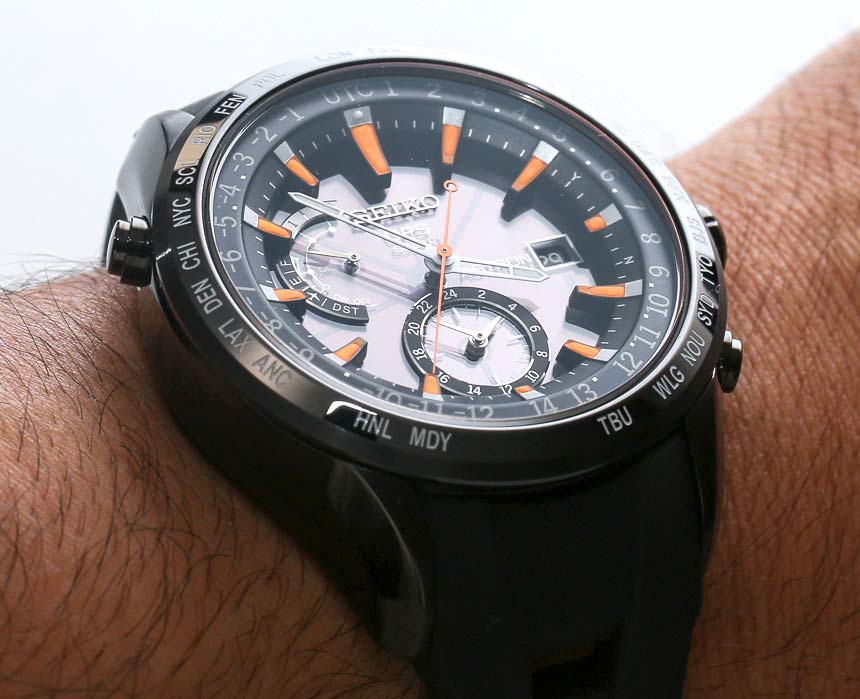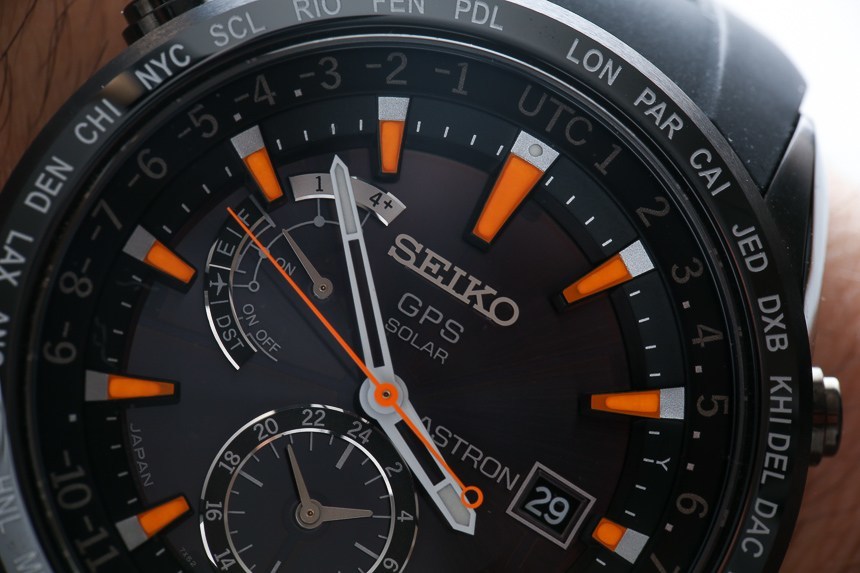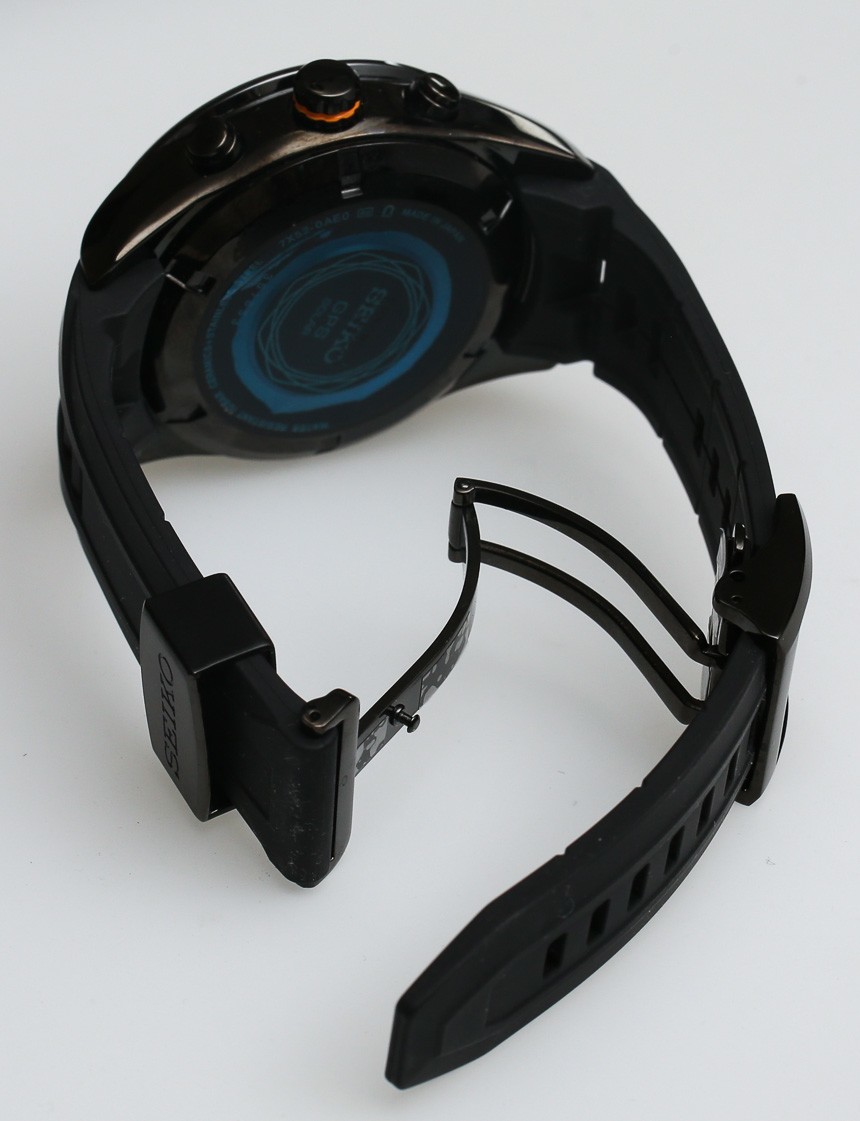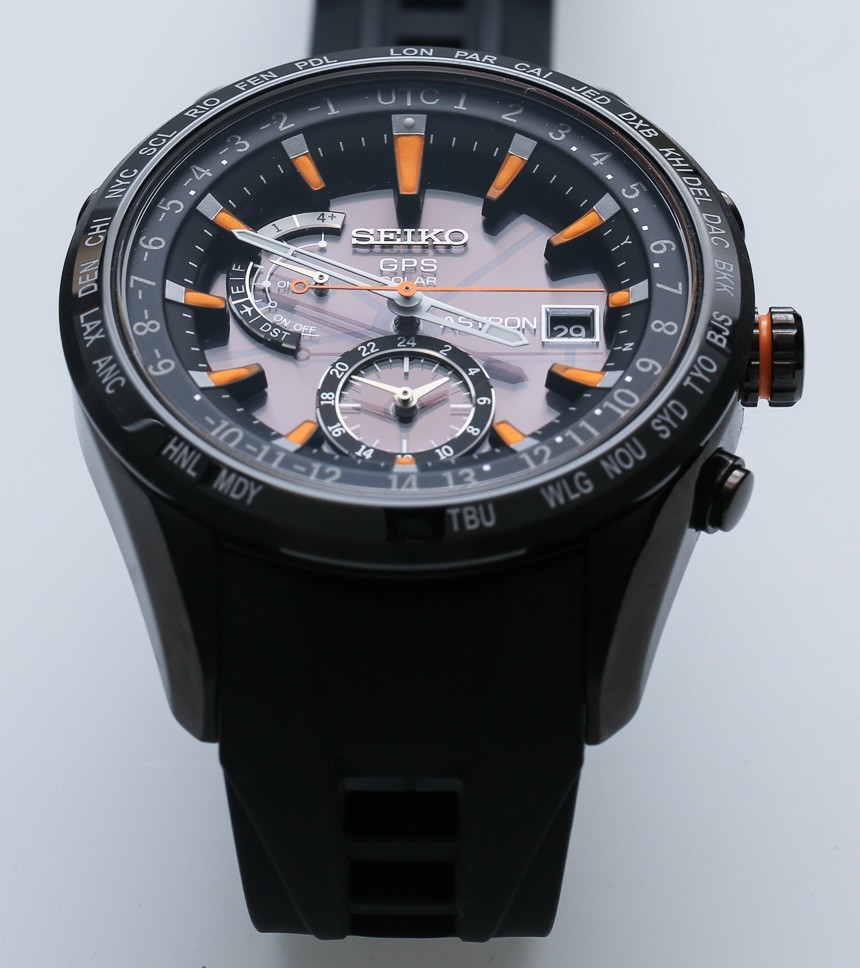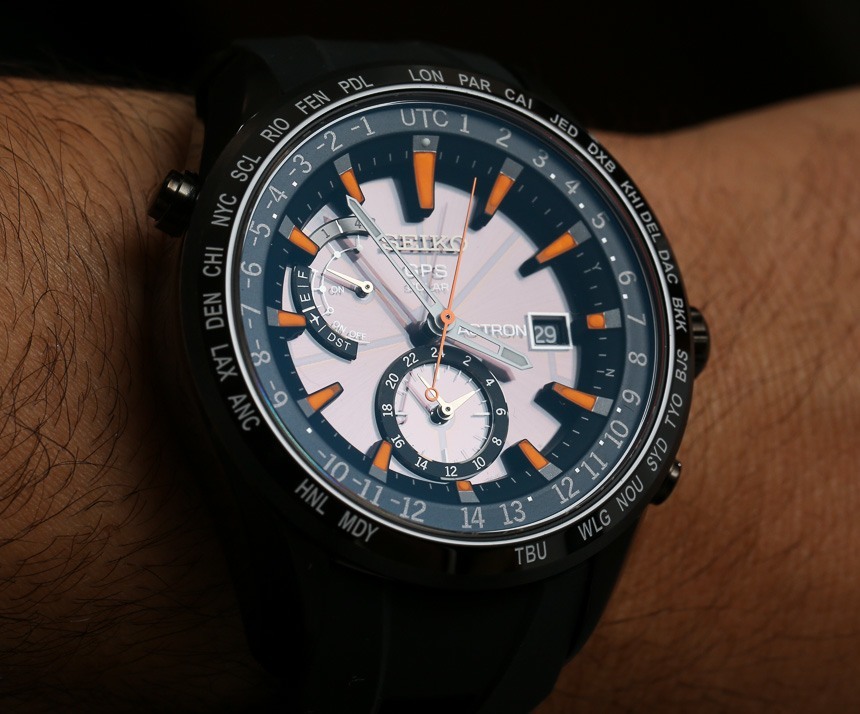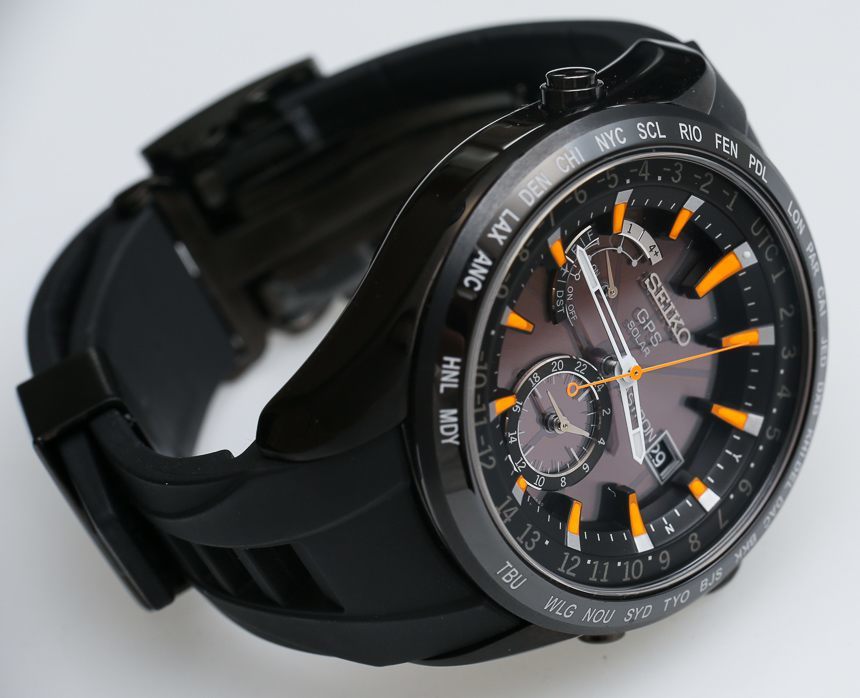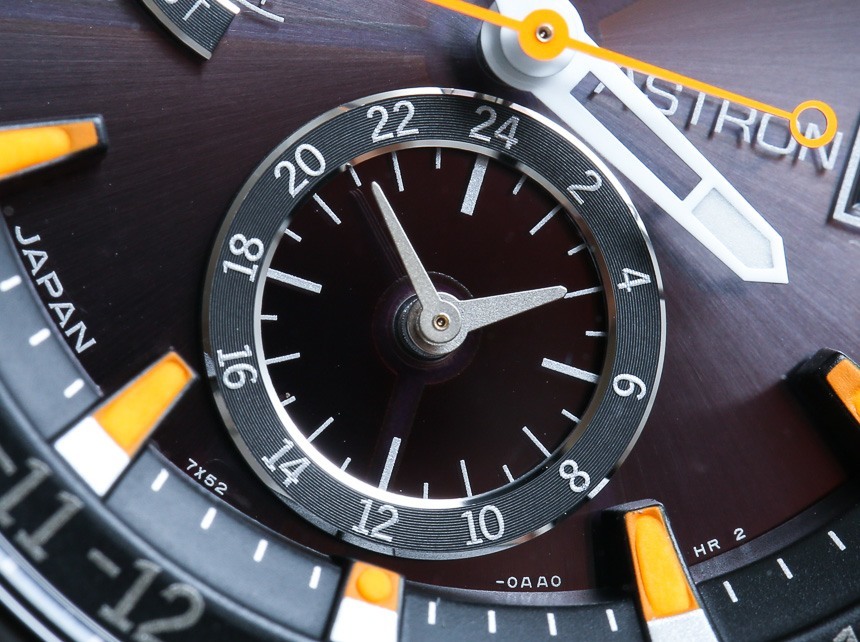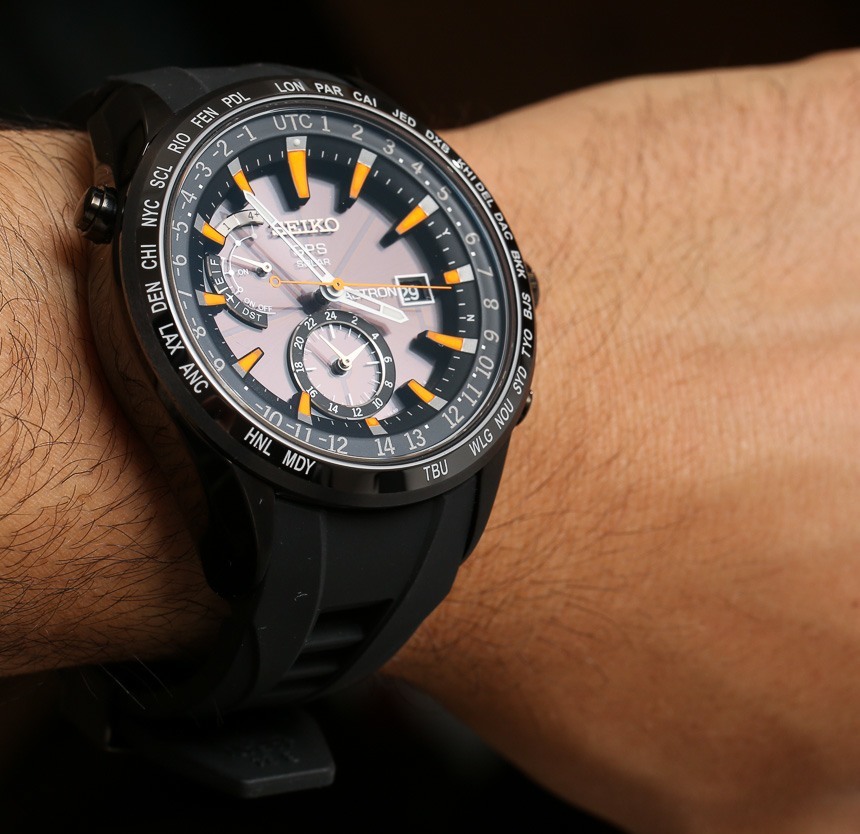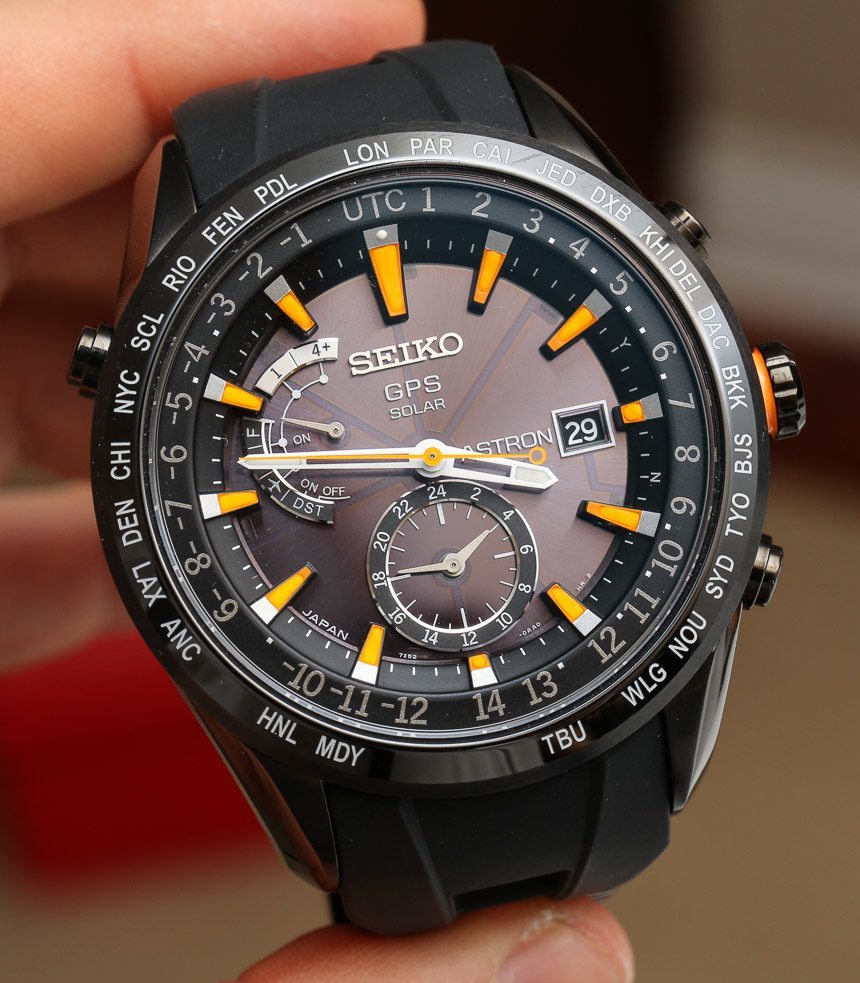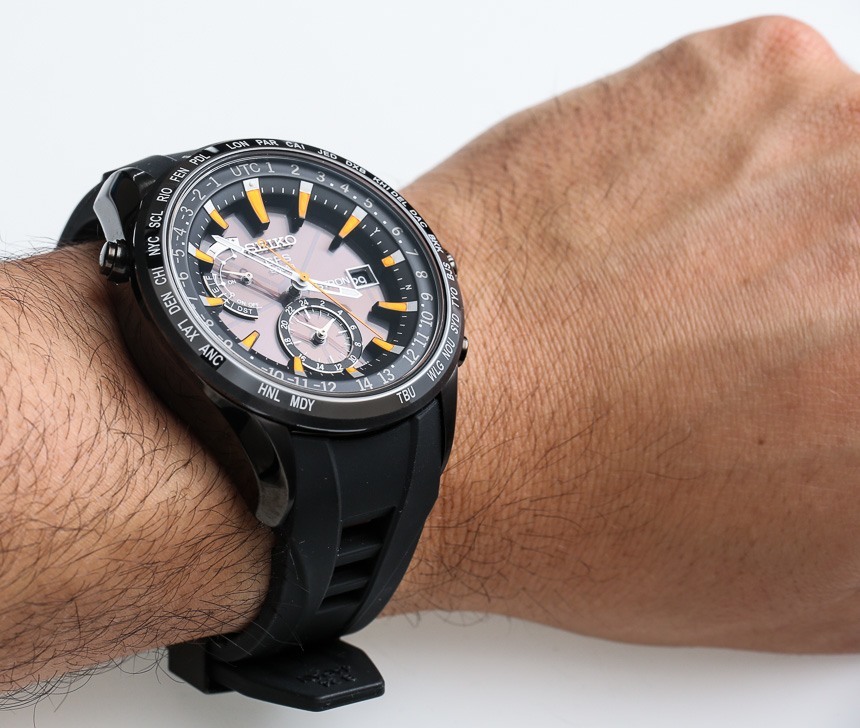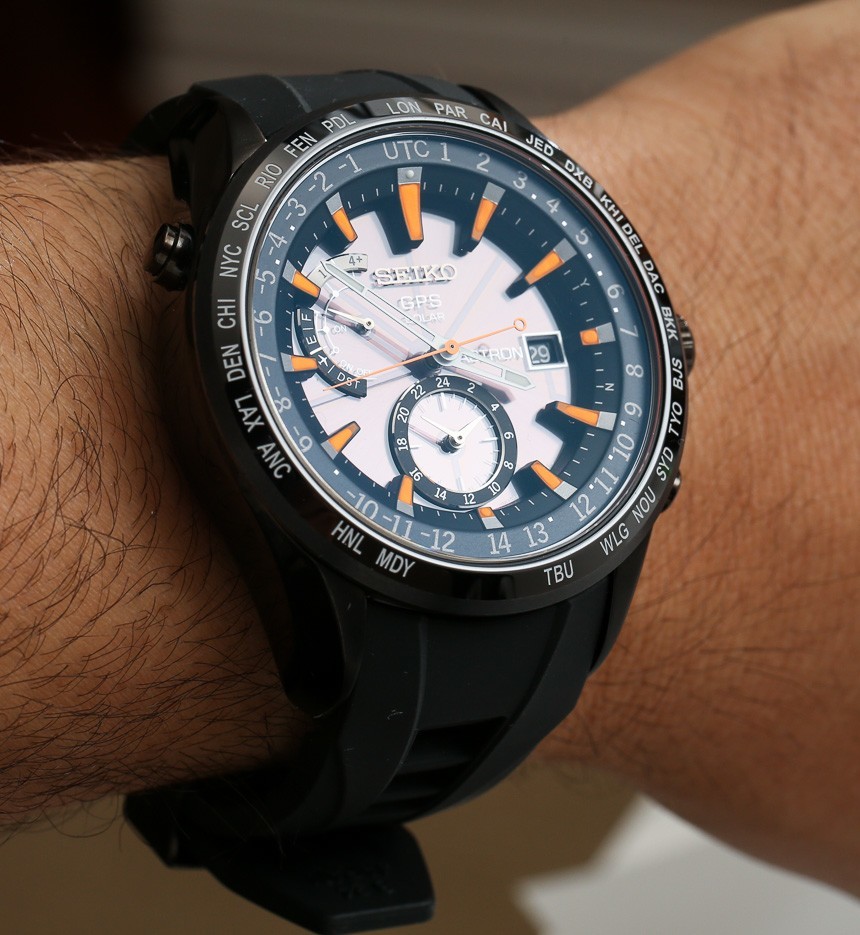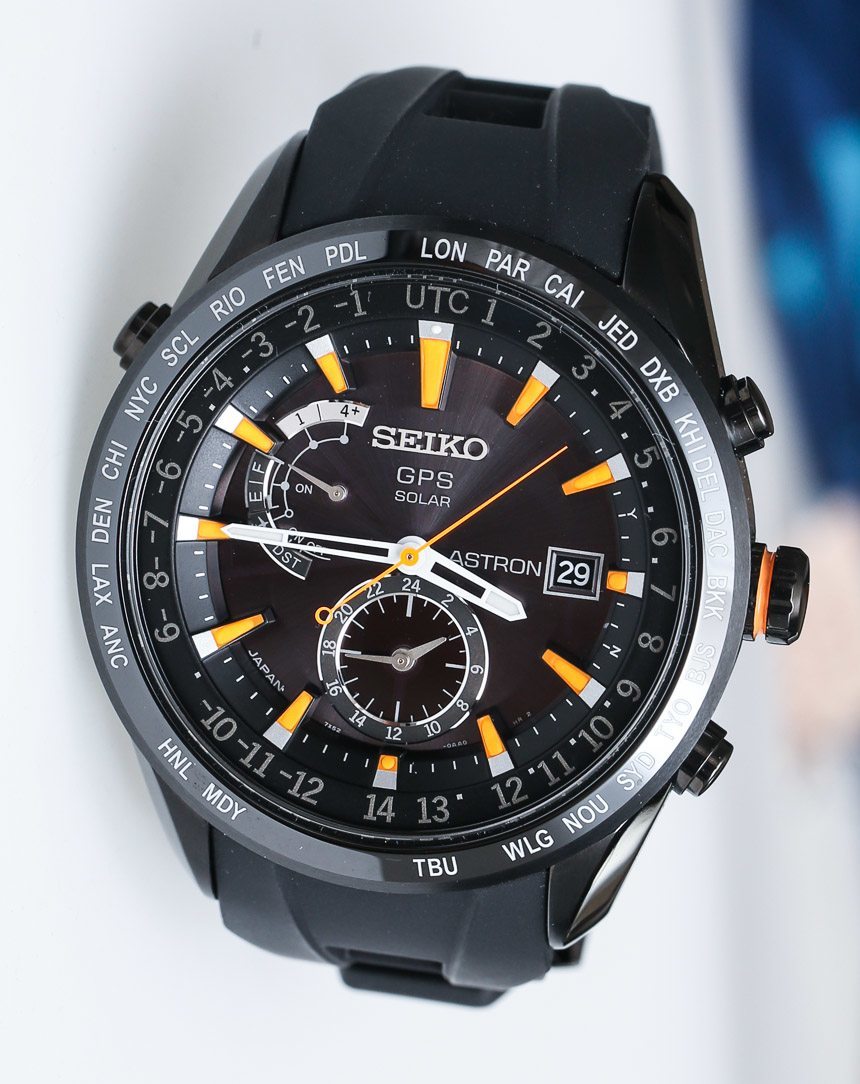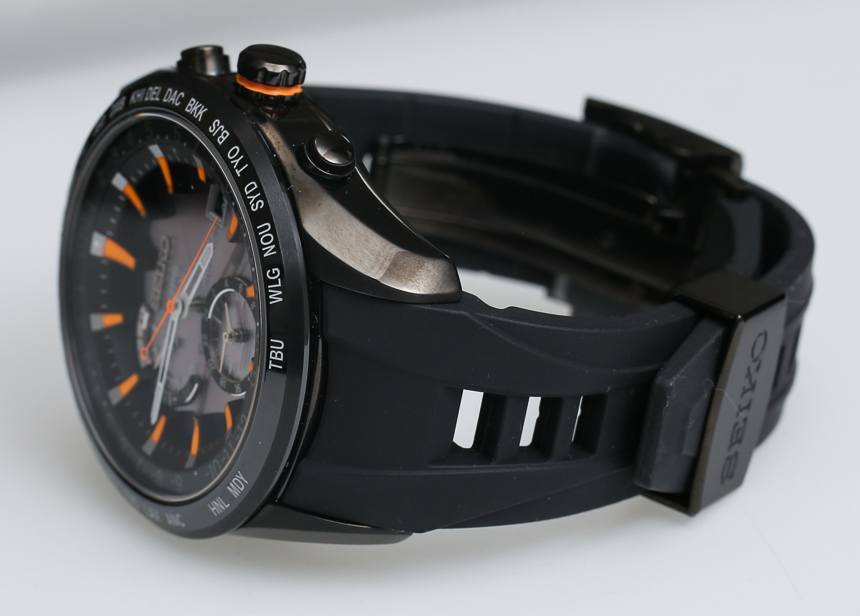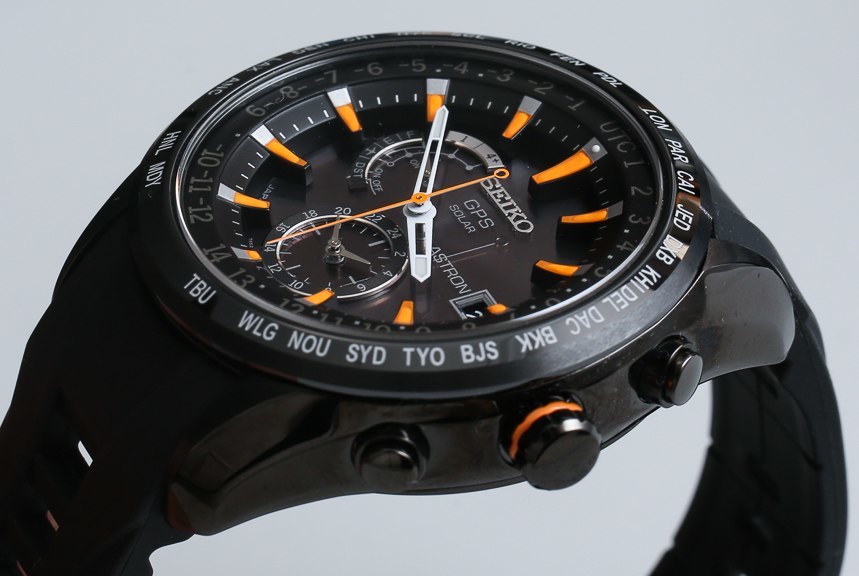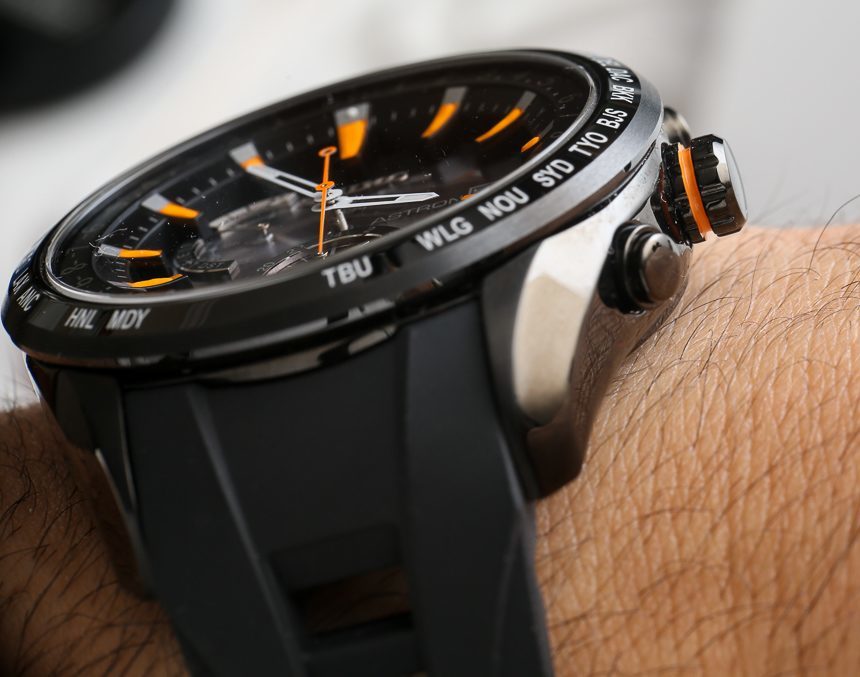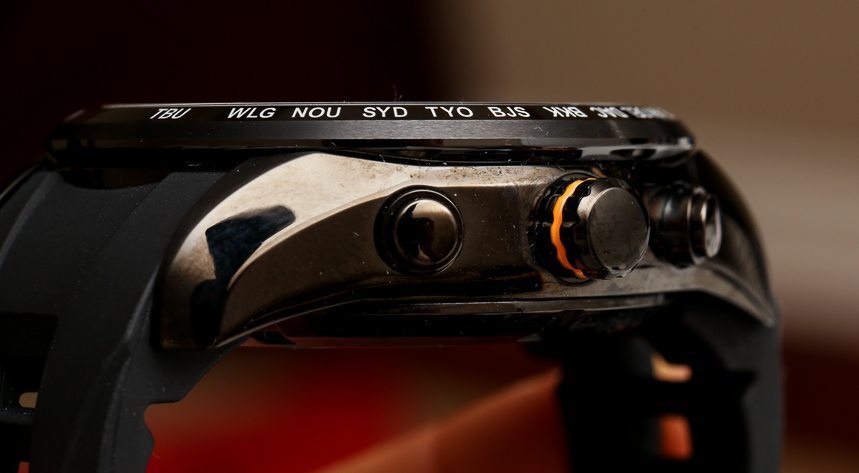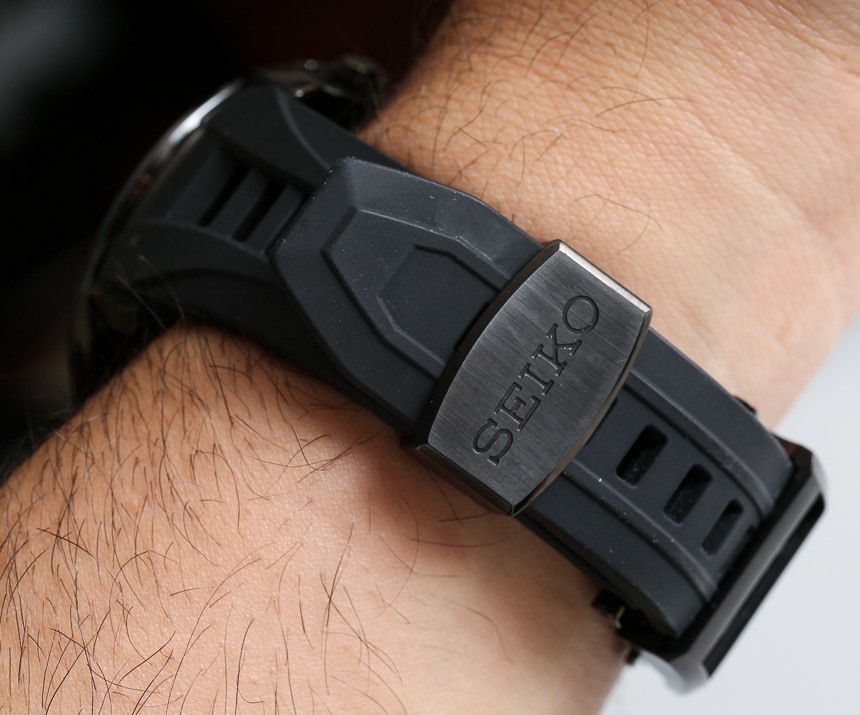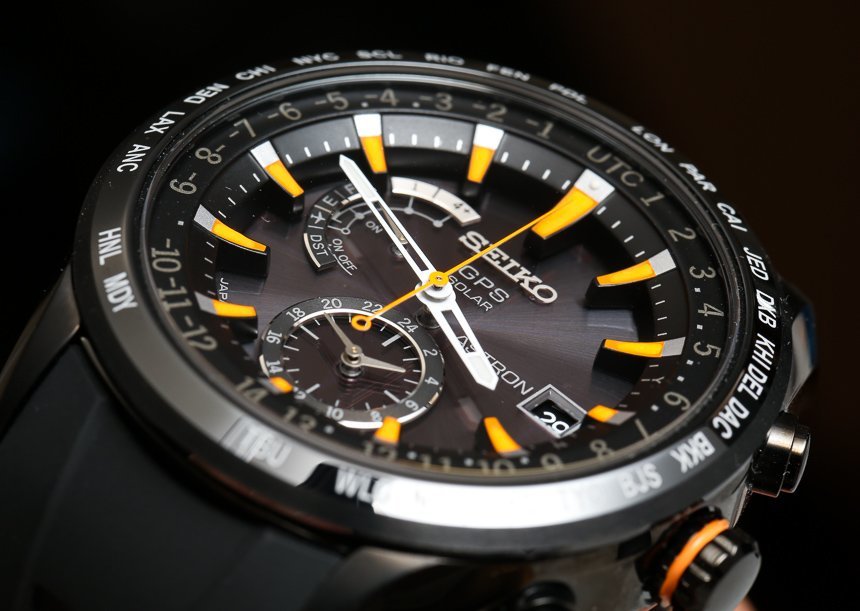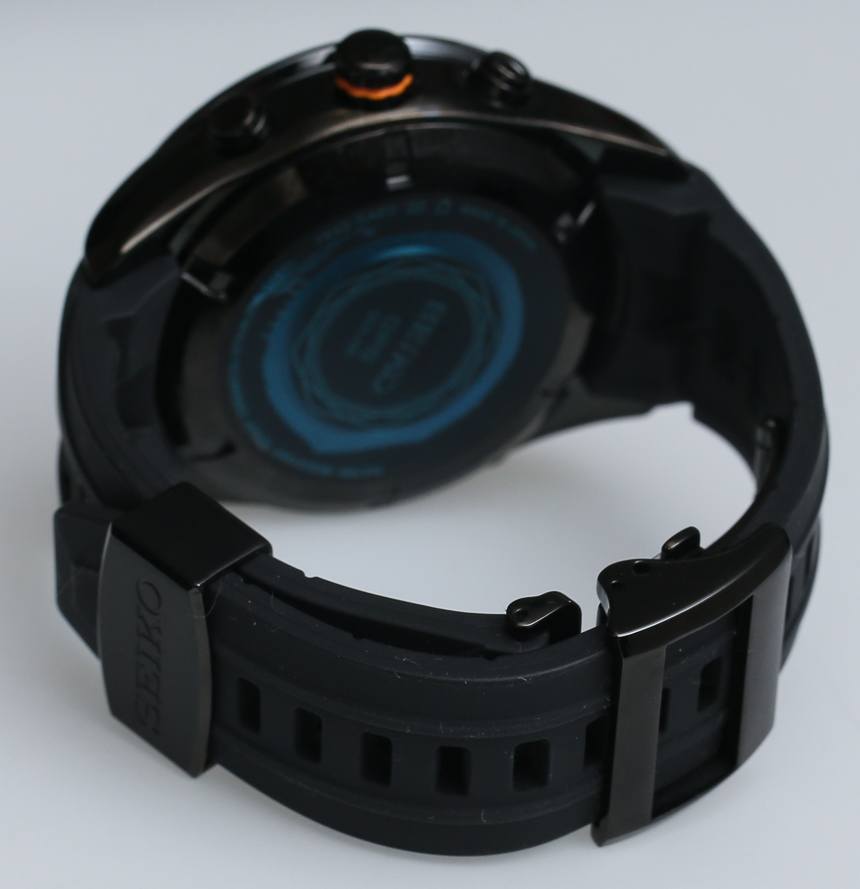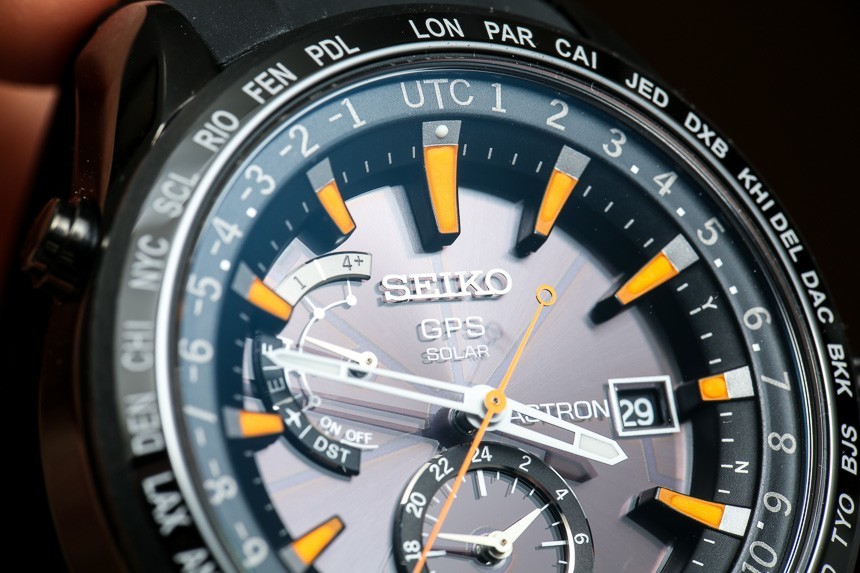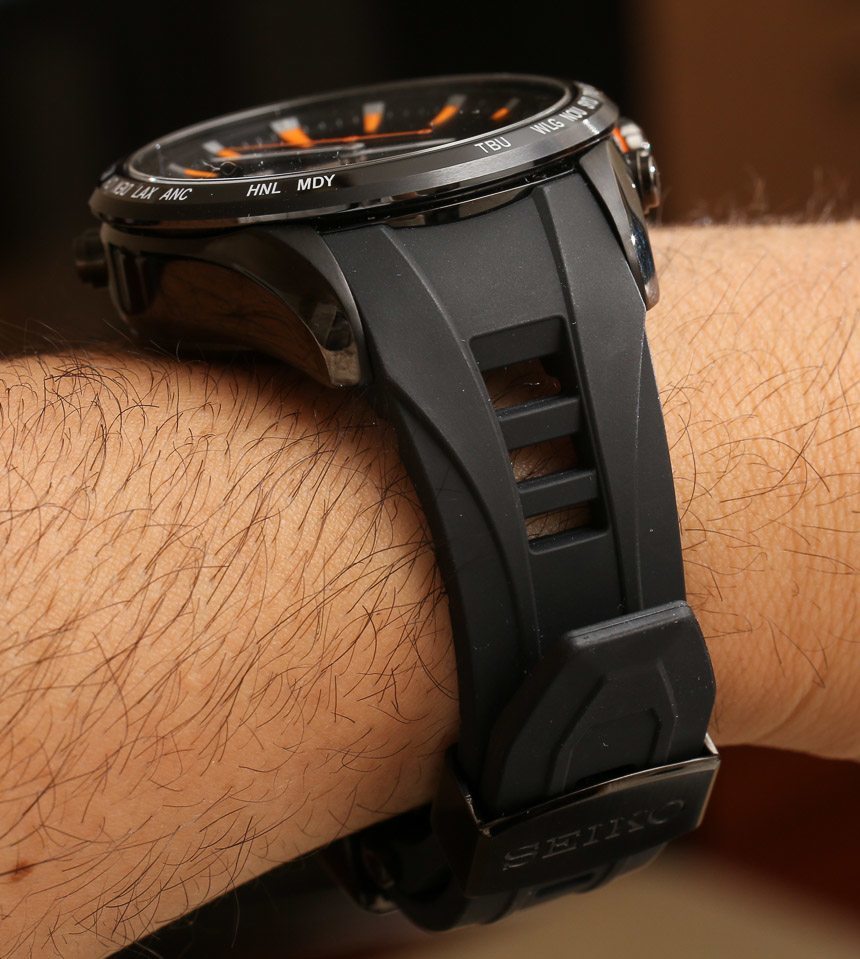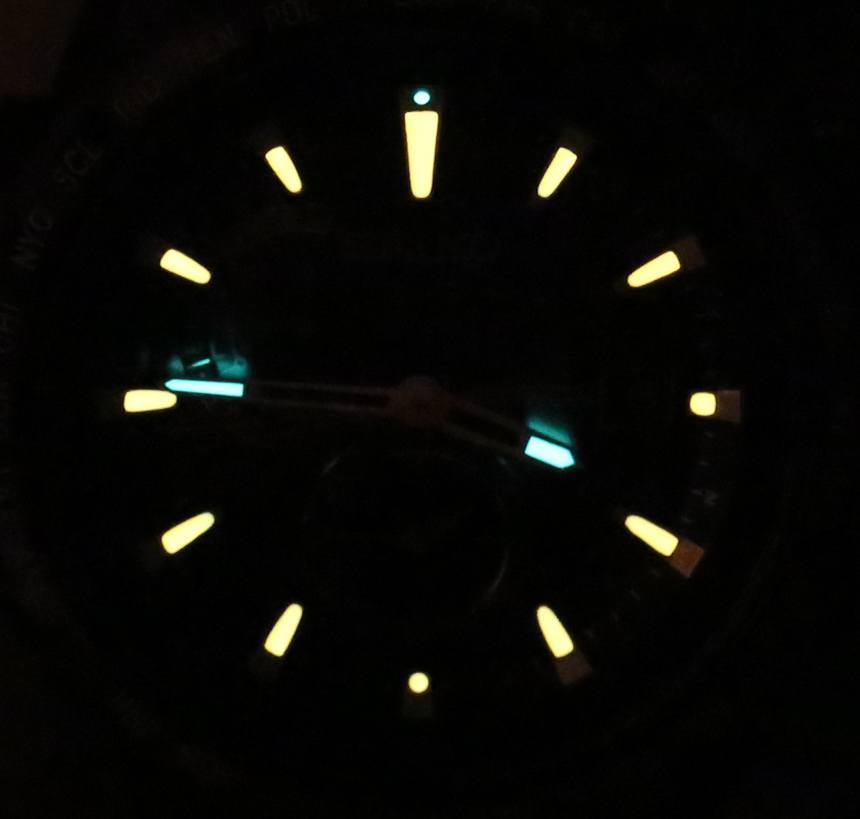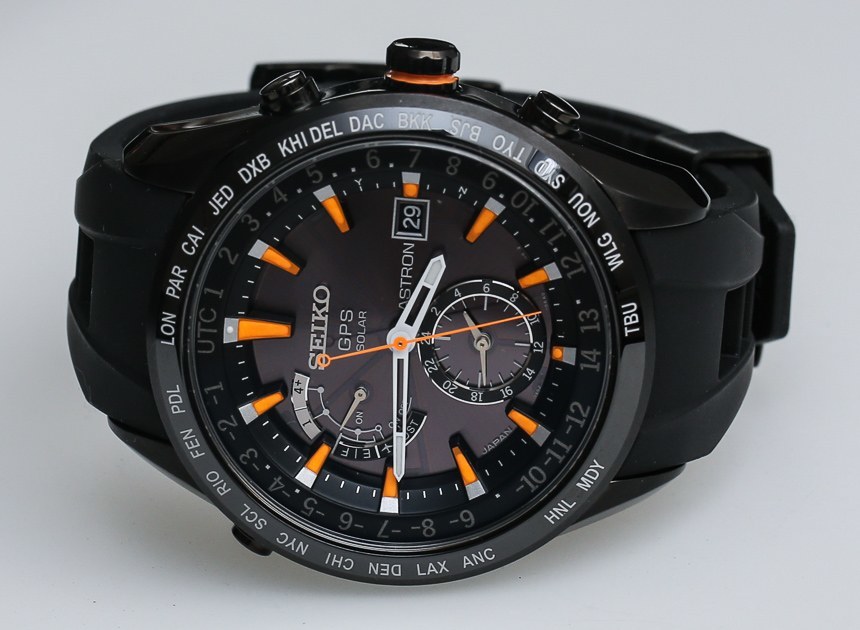
I was actually very pleasantly surprised with the Seiko Astron Solar GPS watch’s ability to connect and receive a signal. I recall the first time I took it outside, looked around and then pressed the pusher that activated the manual signal receiving function. The hand on the dial at about 10 o’clock started to move in order to tell me how many satellite signals it was receiving. The watch is able to receive more than one satellite signal at a time so that it can get the best reading, tell you where you are, and update the time. The entire process was fast and I never thought to myself, “this is barely working.”
Time and time again I repeated the time syncing process and it worked pretty well. Only when I was indoors or clearly in an obstructed area did it fail. It was good enough that I felt it was a reliable system, which is important because in many ways you could consider this a survival watch, with its ability to get the right time anywhere on the planet and be charged by light. It would have certainly made the cut on the desert island survival watch list we did in 2007.
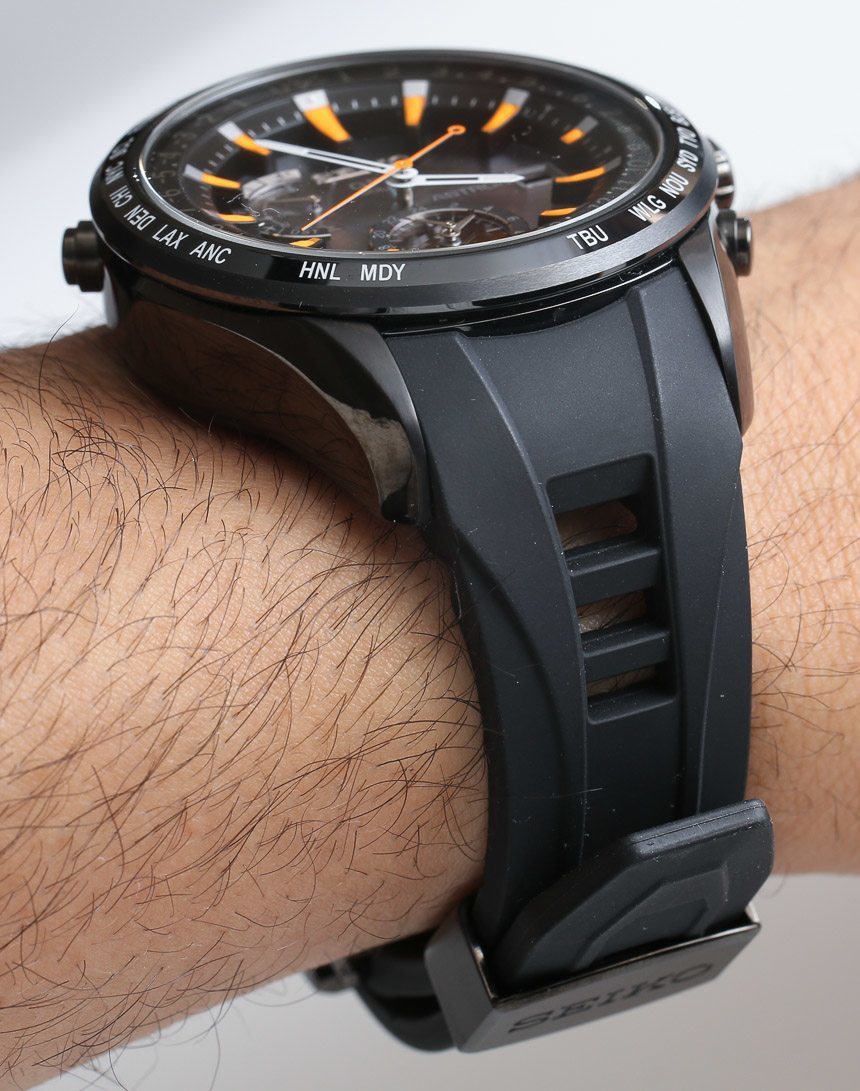
I’ll say this (as I say about many multi-function analog Japanese watches), you really need to read the manual to operate the watch. Try as they may, there are still operational oddities in the Seiko Astron and others like it. For example. the crown–which it has–does not adjust the time. Unscrew it, pull it out, and neither the home or reference time changes. In order to do that you need to use the pushers and go through a little dance of operations. Things like that can be frustrating, and even though the written instructions are clear, and Seiko does has a lot of tutorials, if you are in a bind and need to adjust the watch away from documentation you just need to experiment because it is too easy to forget.
Pretty much the only thing you need to manually adjust on the watch is whether or not you are in daylight saving time. You do just get the date on the dial, but it is a perpetual calendar. Changing DST is rather simple–but again, you need to recall how to do it. The indicator is on that same left indicator strip on the dial, which is also used for other functions and by default is a power reserve indicator for the battery. The other subdial is a 12 hour reference time, and it can be set to the minute–which is good if you are prone to traveling to odd timezones.
Assuming the battery is mostly charged and you are outside, the Astron watch will auto update the time for you. Though I think you need to manually ask it to change location. There is a reference city ring placed on the ceramic bezel which is used for manually adjusting the reference city as well–which helps when traveling. Overall, the dial is attractive and simple, with a cool, high-tech feel. The depth you get from it is impressive, and the raised hands and hour indicators make this an intensely legible watch design.
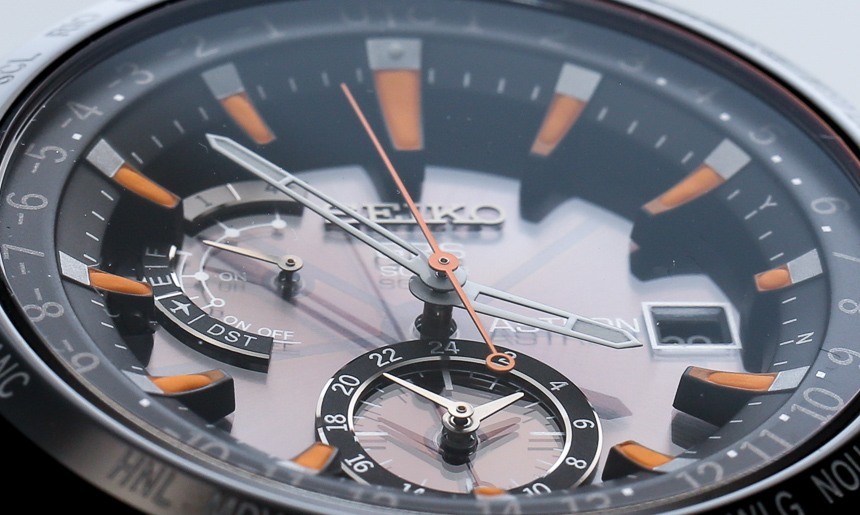
The Seiko Astron Solar GPS watch is a big watch at 47mm wide, and it is thick as well. The sizes seems to be going down, but this will never be a small watch given all the technology inside. Seiko does offer versions in titanium, which I do recommend as they will help offset some of the mass. On the strap especially, the watch is top heavy so wearing it snugly helps. Further, if you are used to lower-end Seiko watches you have a treat in store for you because the Seiko Astron is certainly a high-end quartz watch, and not simply priced high because it is newer technology.
As a high-end quartz watch you have a nicely made case (though it does attract its share of finger prints), AR coated sapphire crystal, and a ceramic bezel. It isn’t quite a Grand Seiko in quality, but it is up there with Seiko’s better stuff. All I would recommend is for them to eventually design slightly more interesting pushers, to match the visual interest of the face.
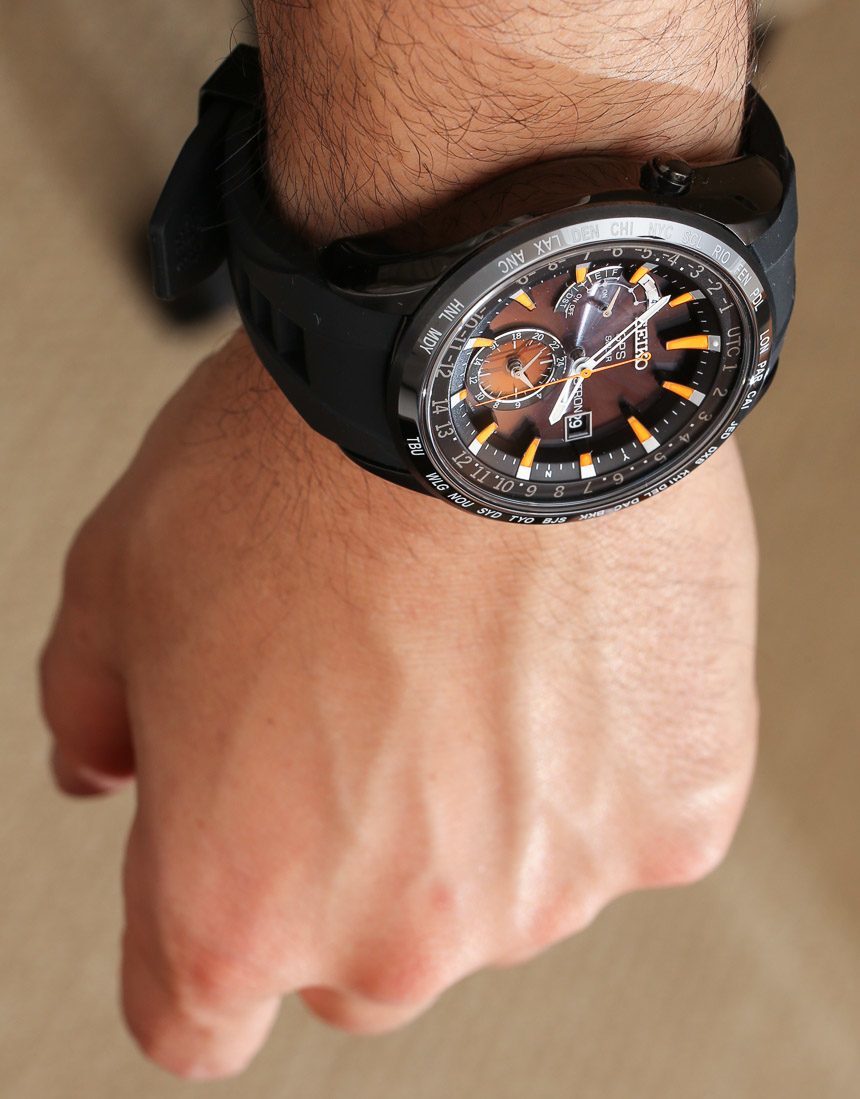
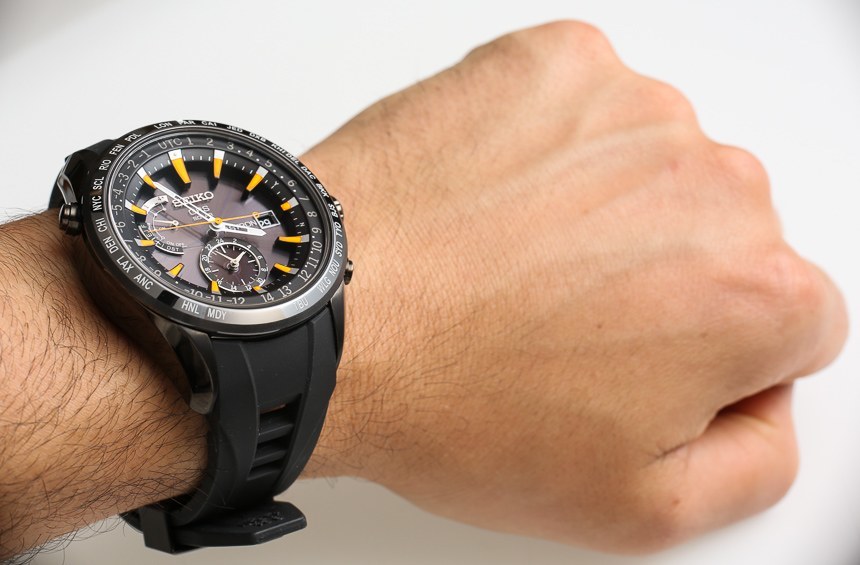
What impressed me the most about the Seiko Astron Solar GPS watch was its ability to just work. As a travel watch, it is reliable, and assuming you recall how to adjust all of its features, it will prove very useful. It is by all accords a techie watch. The futuristic design and large stance of the case make it something that not everyone can or will want to pull off. In fact, all of the available Japanese GPS watches have a very futuristic design and we are not yet at having something a businessman in a tailored suit will want to wear in business class–though some of the versions on the bracelet are coming close.
I happen to like the Seiko Astron Solar GPS watch a lot, but its size and bold styling make it difficult to consider as a full-time watch. As a travel or adventure watch I would gladly choose it, as even just glancing at the time is a pleasure, given the extreme legibility. One of my favorite parts is the deployment clasp on the strap and the large strap end loop with its prominent engraved “Seiko” logo staring at me each time I put the watch on. In many ways, the Seiko Astron Solar GPS watch is a current best-of-breed, but the competition is still strong and people interested in satellite-controlled watches have a few really good options from our friends in Japan. Price for this Seiko Astron Solar GPS ref SAST025 watch is $1,850 and the collection goes up to about $2,500. seiko-astron.com
Seiko Astron Solar GPS Watch Necessary Data
>Brand: Seiko
>Model: Astron (ref. SAST025 as tested)
>Price: $1,850
>Size: 47mm
>Would reviewer personally wear it: Yes
>Friend we’d recommend it to first: Gadget watch lover with a love for Japanese things and a desire to be on time anywhere on the planet.
>Best characteristic of watch: Technology that works reliably with a fantastically legible and interesting dial.
>Worst characteristic of watch: Rather thick case and it could benefit from a more straight forward way to adjust the functions.

